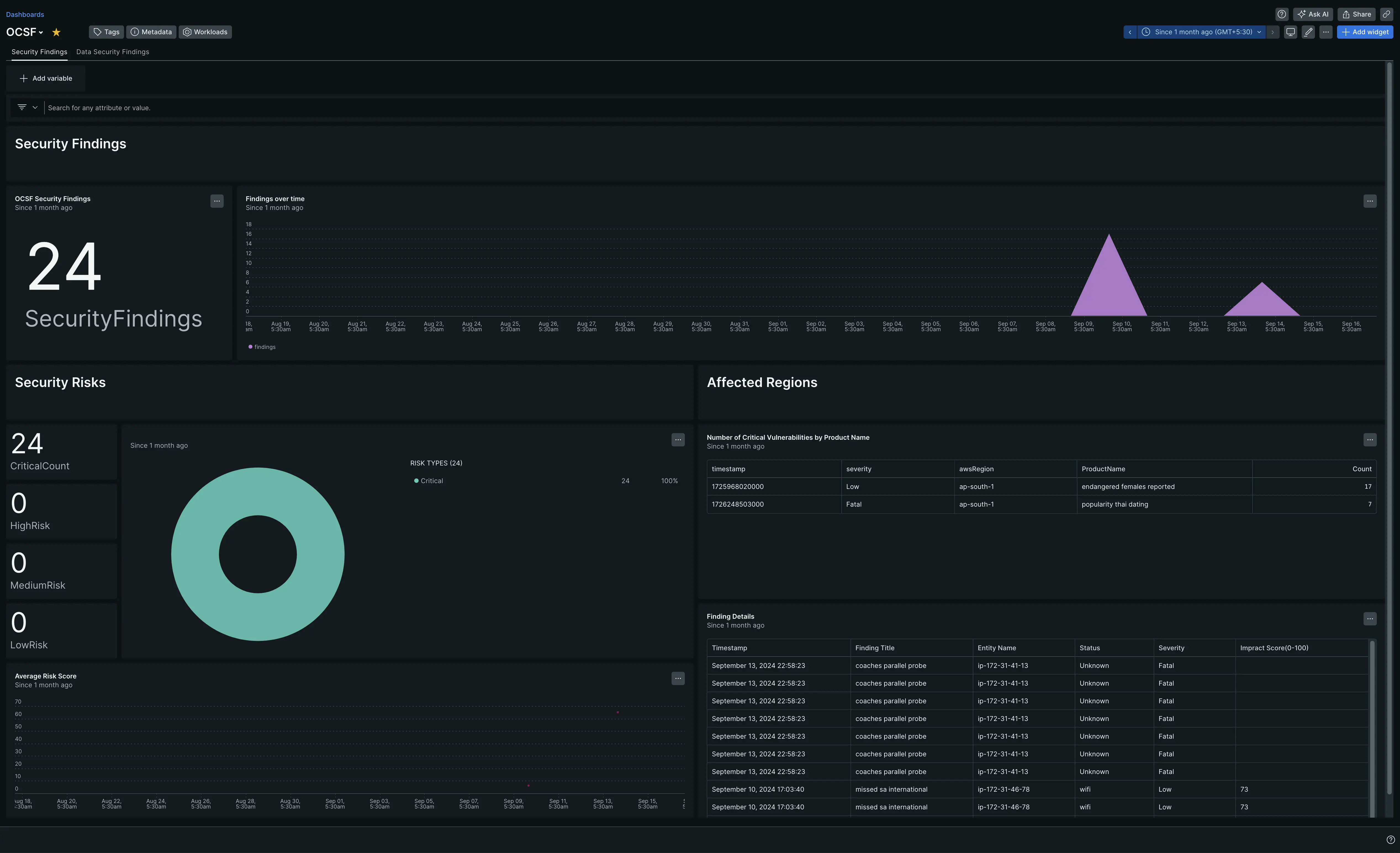Use New Relic para monitor perfeitamente os dados do Open Cybersecurity Schema Framework (OCSF). Você obterá visibilidade abrangente de dados relacionados à segurança de diversas fontes para facilitar a detecção de ameaças, a resposta a incidentes e a conformidade.

Depois de configurar nossa integração com o OCSF, veja seus dados em um dashboard imediatamente.
Configurar a integração do OCSF
Conclua as seguintes etapas para configurar a integração do OCSF:
Instalar o agente de infraestrutura
Para usar a integração do OCSF, você também precisa instalar o agente de infraestrutura no mesmo host. O agente de infraestrutura monitora o próprio host, enquanto a integração que você instalará na próxima etapa estende seu monitoramento com dados específicos do OCSF.
Habilitar a integração do OCSF com nri-flex
Crie um arquivo chamado
nri-ocsf.ymlno diretório integração:bash$touch /etc/newrelic-infra/integrations.d/nri-ocsf.ymlAdicione o seguinte trecho ao seu arquivo
nri-ocsf.ymlpara permitir que o agente capture dados OCSF:integrations:
- name: nri-flex
config:
name: ocsfExample
global:
base_url: http://ip-address:PORT
headers:
accept: application/json
apis:
- event_type: ocsfSampleEvent # use this name to query the data url: /customEndpoint # endpoint with OCSF data
- event_type: ocsfCustomEvent1
url: /customEndpoint2
Reinicie o agente do New Relic Infrastructure
Use as instruções em nossos documentos do agente de infraestrutura para reiniciar seu agente de infraestrutura. Este é um comando que deve funcionar para a maioria das pessoas:
$sudo systemctl restart newrelic-infra.serviceEncontre seus dados
Você pode usar nosso modelo dashboard pré-criado para monitor seu aplicativo métrico OCSF. Siga estas etapas para usar nosso modelo dashboard pré-criado:
Vá para one.newrelic.com > All capabilities > + Integrations & Agents.
Selecione Dashboards para acessar os recursos pré-criados.
Pesquise OCSF e selecione o dashboard.
Para instrumentar o OCSF início rápido e ver métricas e alertas, você também pode acompanhar nossa página OCSF início rápido clicando no botão Install now .
Aqui está um exemplo de consulta NRQL para visualizar o master tempo de operação do OCSF:
SELECT * FROM ocsfSampleEvent
Qual é o próximo?
Para saber mais sobre como construir uma consulta NRQL e gerar um painel, confira estes documentos:
Introdução ao criador de consulta para criação de consultas básicas e avançadas.
Introdução aos dashboards para personalizar seu dashboard e realizar diversas ações.
Gerencie seu dashboard para ajustar o modo de exibição ou para adicionar mais conteúdo ao dashboard.